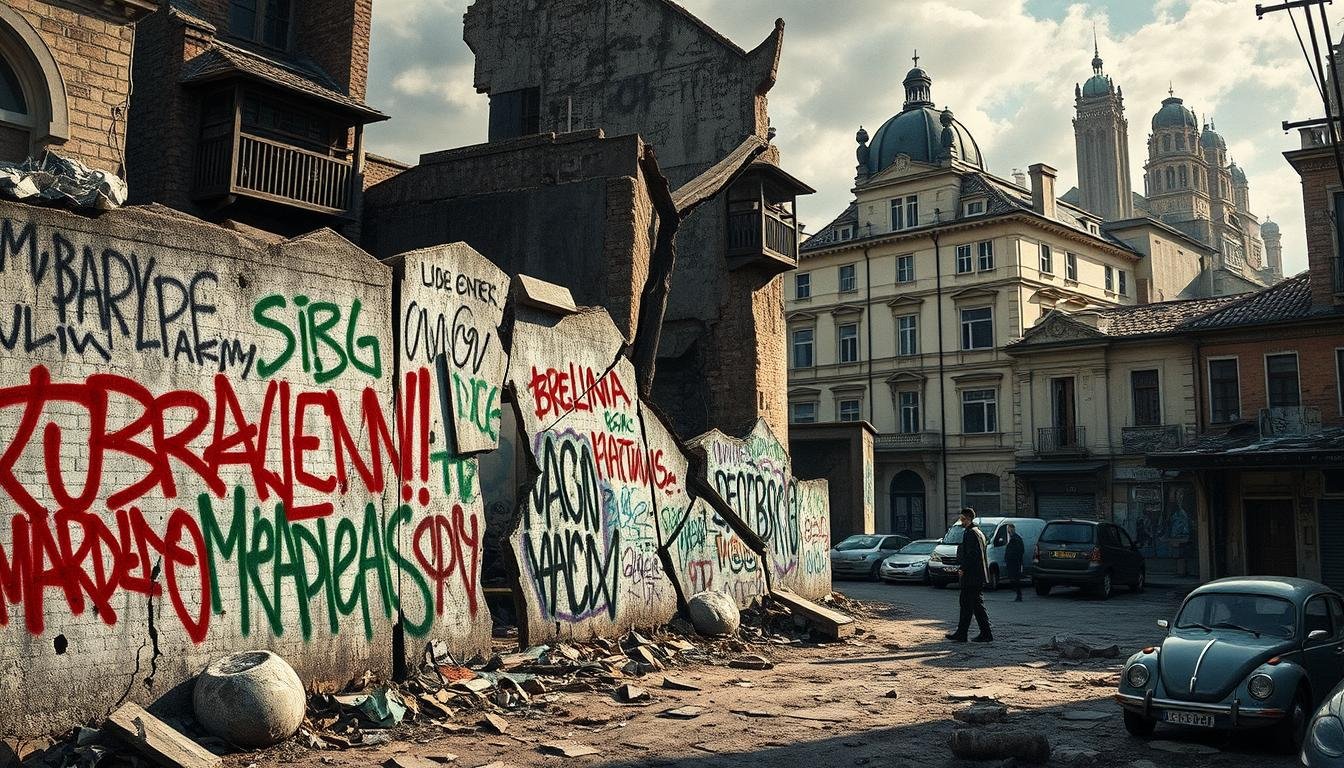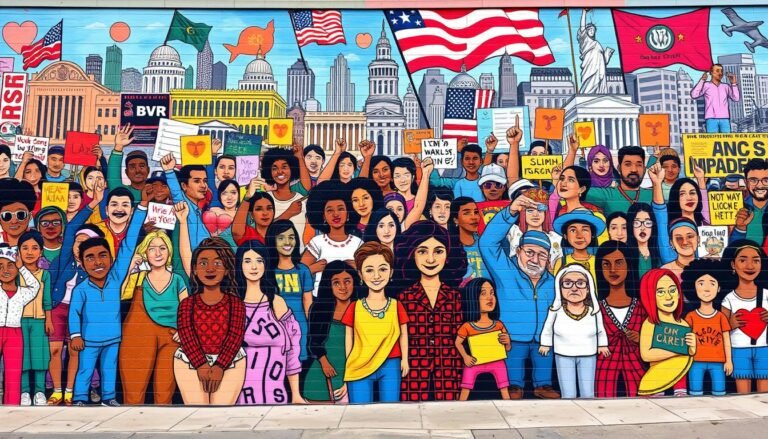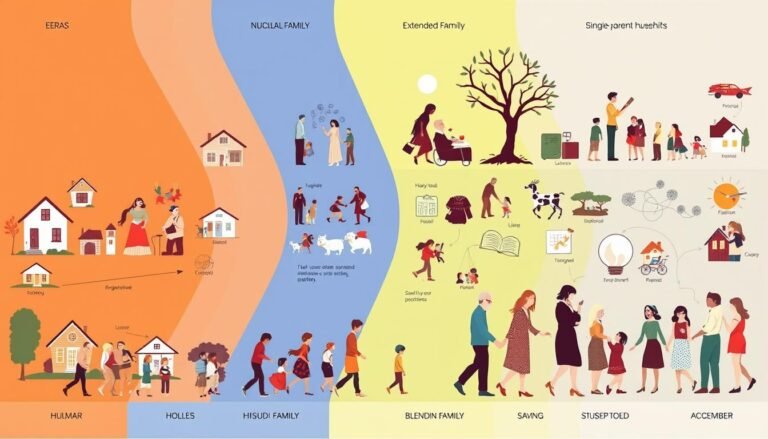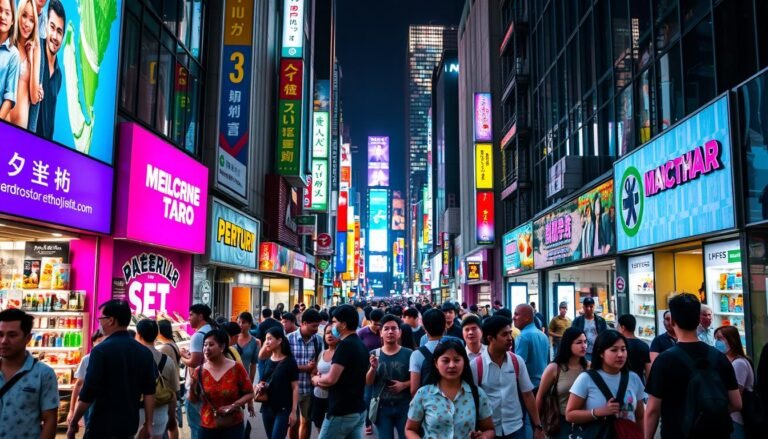The Sociology of Deviance: Why People Break Social Norms
Ever thought about why some people break rules while others stick to them? This question is key to the sociology of deviance. It’s a field that looks into why people act differently from what’s expected. By studying this, we learn a lot about how society works.
Deviance isn’t just about crime or extreme actions. It’s about any action that goes against what society expects. It can be small or big. By understanding deviance, we see how societies deal with different behaviors. This shapes our social world.
Take Dr. James Fallon, a neuroscientist who found out he had a psychopath’s brain structure. This story makes us think differently about deviance. It shows how biology, environment, and behavior are linked.
Looking into the sociology of deviance, we’ll see different theories and views. These help us understand why people act differently. From Émile Durkheim’s early work to modern ideas like labeling theory, we’ll see how deviant behavior affects society.
Key Takeaways
- Deviance involves behavior that violates social norms
- Sociological perspectives offer unique insights into norm-breaking
- Deviance serves important functions in society
- Biological, social, and environmental factors influence deviant behavior
- Understanding deviance helps clarify societal expectations and values
Understanding Deviance in Society
Deviance is key in shaping our social norms and behaviors. It’s more than just breaking rules; it’s a mix of social control, actions, and cultural expectations. Let’s explore how deviant behavior affects our society.
Defining Social Norms and Deviant Behavior
Social norms are the rules we follow without thinking. When someone breaks these norms, it’s called deviant behavior. This can be anything from small infractions to serious crimes. For instance, being loud in a library is deviant, as is theft or violence.
The Importance of Studying Deviance
Studying deviance helps us understand how societies work and change. It reveals power structures, how societies control people, and how norms evolve. By looking at deviance, we can answer big questions about crime, how society reacts to harmful actions, and what makes certain actions deviant.
Historical Perspectives on Deviance
Our views on deviance have changed a lot over time. In the late 1800s, drugs like cocaine and marijuana were in things like Coca-Cola. Now, they’re illegal in the U.S. This shows how norms and what we see as deviant can change.
| Time Period | Perspective on Deviance | Example |
|---|---|---|
| Late 1800s | Relaxed attitudes towards drugs | Cocaine in Coca-Cola |
| Present Day | Strict drug laws | Cocaine classified as illegal |
Howard S. Becker’s work shows that deviance isn’t in the act itself. It comes from others labeling it as such. This idea shows how important the social setting is in defining deviant behavior.
Émile Durkheim’s Contributions to Deviance Theory
Émile Durkheim was a key figure in sociology. He saw deviance as vital to society. It sparks change and innovation.
He talked about the collective conscience. This is what everyone in a society believes and feels morally. Deviance helps make these norms clear and boosts social ties.
When society punishes deviant acts, it shows its values and what it expects. This strengthens social norms.
Durkheim also looked at social integration. He found that how well people fit into society affects deviance. His famous study on suicide showed four types: altruistic, egoistic, anomic, and fatalistic. Each type linked to different levels of social integration or control.
“Deviance is a necessary part of a successful society, challenging present views and reaffirming social norms when punished.”
Durkheim’s ideas have shaped how we see deviance. They show the deep link between what we do and what society expects. His work still guides studies on crime, deviance, and how society controls behavior.
| Function of Deviance | Description |
|---|---|
| Clarifies Norms | Increases conformity by defining boundaries |
| Strengthens Social Bonds | Unites society against deviant acts |
| Promotes Social Change | Challenges existing norms, leading to progress |
The Sociology of Deviance: Why People Break Social Norms
People break social norms for many reasons. Genetics, personality, upbringing, and society all affect deviant behavior. Studies show that 40-60% of addiction is due to genetics. Social factors also play a big part in substance use and addiction.
Social Control and Its Influence on Behavior
Social control affects how we act through both formal and informal norms. Breaking formal norms, like stealing, can lead to legal trouble. Informal norms, like gossiping, can cause social exclusion.
Anomie Theory and Its Relevance
Anomie theory says deviance comes from a gap between what society wants and how to get it. If people can’t reach their goals legally, they might turn to deviant actions. This can include stealing or selling drugs to meet societal expectations.
Strain Theory and Deviant Adaptations
Robert Merton’s strain theory explains deviance as not being able to achieve goals legally. This can lead to different reactions, like using illegal means or rejecting both goals and legal ways to get them.
| Type of Deviance | Examples | Possible Consequences |
|---|---|---|
| Formal | Theft, assault, fraud | Legal punishment |
| Informal | Gossiping, tardiness | Social ridicule |
| Subcultural | Gang violence, drug use | Ostracism from mainstream society |
These theories help us understand why people act differently. Deviance is not just about the act but also the situation and culture. By looking into deviance, we learn about our values and how power affects us.
Labeling Theory and Its Impact on Deviant Behavior
Howard Becker introduced labeling theory in 1963 with his book “Outsiders.” It shows how society’s reactions shape our actions. This idea is key to understanding why some behaviors keep happening.
Primary and Secondary Deviance
Kai T. Erikson built on Becker’s work in 1966. He talked about primary and secondary deviance. Primary is the first time someone breaks a rule. Secondary happens when people keep acting deviant because they feel labeled.
The Self-Fulfilling Prophecy in Deviance
Labeling theory says that how we see someone can make them act a certain way. For example, if teens are seen as deviant, they’re more likely to keep acting out as adults. This shows how big of a role society plays in our actions.
Critiques of Labeling Theory
Some say labeling theory doesn’t make people take enough blame for their actions. Research on how being labeled affects behavior is mixed. Some studies link labeling to more deviance, while others don’t find a connection.
| Group | Likelihood of Police Intervention | Likelihood of Arrest | Severity of Sentencing |
|---|---|---|---|
| Lower-class individuals | Higher | Higher | Harsher |
| Minority groups | Higher | Higher | Harsher |
| Upper-class individuals | Lower | Lower | Less severe |
This data shows how labeling affects some groups more than others. It’s important to think deeply about how we define and deal with deviance in our society.
Types of Deviance in Modern Society
Deviance in today’s world comes in many forms, from small missteps to big crimes. What we see as deviant is shaped by social norms. In the U.S., crime stats show how widespread deviant behavior is.
Violent crimes like murder, rape, and assault are big parts of deviance. In 2009, over 1.4 million violent crimes were reported. Property crimes, like burglary and theft, were even more common, with nearly 15 million incidents that year.
White-collar crime is another type of deviance that’s not always seen. It costs businesses $20 billion a year in employee theft, and another $300 billion in tax evasion. These numbers show deviance isn’t just about street crime.
| Type of Crime | Annual Cost |
|---|---|
| Employee Theft | $20 billion |
| Health-care Fraud | $100 billion |
| Tax Evasion | $300 billion |
Deviant subcultures also shape our social norms. These groups have their own rules that might clash with what society expects. Knowing about these types of deviance helps us find ways to control it and understand why people break norms.
The Relativity of Deviance Across Cultures and Time
Deviance isn’t fixed. It changes with cultural views, social norms, and power. What’s okay in one place might be a big deal elsewhere. Let’s look at how deviance changes across cultures and over time.
Cultural Variations in Defining Deviance
Different cultures see deviance in different ways. For instance, fifty years ago, schools banned women from wearing pants. Now, it’s perfectly fine. This shows how social norms change.
Historical Shifts in Deviant Behaviors
History is full of examples of changing views on deviance. Back in the late 1800s, cocaine, marijuana, and opium were common. But today, they’re mostly illegal. This shows how society’s views on certain behaviors change over time.
The Role of Power Structures in Defining Deviance
Power plays a big role in what we see as deviant. Sociologist Howard Becker said, “The deviant is one to whom that label has been successfully applied.” This means those in power often decide what’s deviant.
“Deviance is a consequence of the application by others of rules and sanctions to an ‘offender.'” – Howard S. Becker
Take the Wells Fargo scandal for example. CEO John Stumpf left after the company made fake accounts and charged wrong fees. This case shows how corporate actions are viewed differently from personal ones. It highlights how power affects our view of deviance.
Subcultures and Deviant Behavior
Subcultures greatly influence deviant behavior in society. They often have their own social rules that are different from what most people expect. People in these groups might not see their actions as bad, even if others think they are wrong.
Looking into deviant subcultures helps us understand how groups form their identities. For instance, African American gangs started in the 1910s as a way to fight back against racism and police mistreatment. This shows how society’s unfairness can lead to the creation of subcultures with their own values.
Hip-Hop, which started in the 1970s in New York City, was seen as deviant by many. This view made it harder for it to be accepted, deepening the gap between subcultures and mainstream society. When some actions are labeled deviant by those in power, it can make racial divides worse and keep negative stereotypes alive.
It’s important to understand deviant subcultures to tackle social problems. By seeing why these groups form, we can aim for more accepting social norms. This can help reduce the exclusion of certain groups.
Social Control Mechanisms and Their Effectiveness
Society uses social control to keep things running smoothly and handle misbehavior. It uses both official and unofficial ways to do this. Official actions like arrests or fines are part of formal sanctions. On the other hand, informal sanctions include social reactions like disapproval or gossip.
Formal vs. Informal Social Control
Formal social control depends on laws and organizations. The police make sure rules are followed, courts decide on punishments, and prisons hold those who break the law. But, informal control happens every day. Things like family, friends, and neighbors shape our actions through praise or criticism.
The Role of Institutions in Managing Deviance
Institutions like schools, religions, and families play a big role in controlling misbehavior. Schools teach us what’s right and wrong and discipline us. Religions guide us with moral values. Families teach us the basics of how to behave. Together, these groups help shape our actions and reduce misbehavior.
Challenges in Implementing Social Control
Finding the right balance between individual freedom and societal needs is hard. Being too strict can take away our freedom. Being too lenient might lead to more crime. It’s a constant challenge. We also need to tackle the deeper issues like poverty or mental health to really make social control work.
| Type of Control | Examples | Effectiveness |
|---|---|---|
| Formal | Laws, Police, Courts | High for serious crimes |
| Informal | Social pressure, Disapproval | Effective for minor infractions |
Conclusion
The study of deviance shows us how social norms and deviant behavior are linked. It tells us that what we see as “deviant” changes over time and across cultures. For example, cocaine and marijuana were once common in America but are now illegal.
Looking at deviance helps us understand why crime rates vary by location. In the U.S., cities often see more crime than rural areas. This connects to social ecology theory, which says that neighborhood conditions affect deviant behavior. Studies from Chicago show that areas with low community strength often have more crime.
Deviance research also shows how social factors affect who gets labeled as deviant. Howard S. Becker argued that being seen as deviant isn’t about the act itself but how society views it. This idea helps us see why some groups get arrested and convicted more often. It shows we need a deeper look at social norms and justice.
Source Links
- Chapter 7. Deviance, Crime, and Social Control
- Deviance – Social Control, Norms, Stigma
- Deviance in Sociology: Definition, Theories & Examples
- 7.1 Social Control and the Relativity of Deviance
- Deviance (sociology)
- Explaining Deviance
- Functionalism and Deviance | Introduction to Sociology
- Theoretical Perspectives on Deviance
- Deviant Behavior: Definition, Causes, and Types
- Labeling Theory of Deviance in Sociology: Definitions & Examples
- Labeling theory | Concepts, Theories, & Criticism
- Deviance, Crime, and Social Control
- Sociological Theories of Crime and Deviance | National University
- Deviance and Control | Introduction to Sociology
- Deviance, Crime and Social Control
- Subcultures, Race, and Deviance
- Chapter 7. Deviance, Crime, and Social Control
- 7.2 Deviance and Social Control







